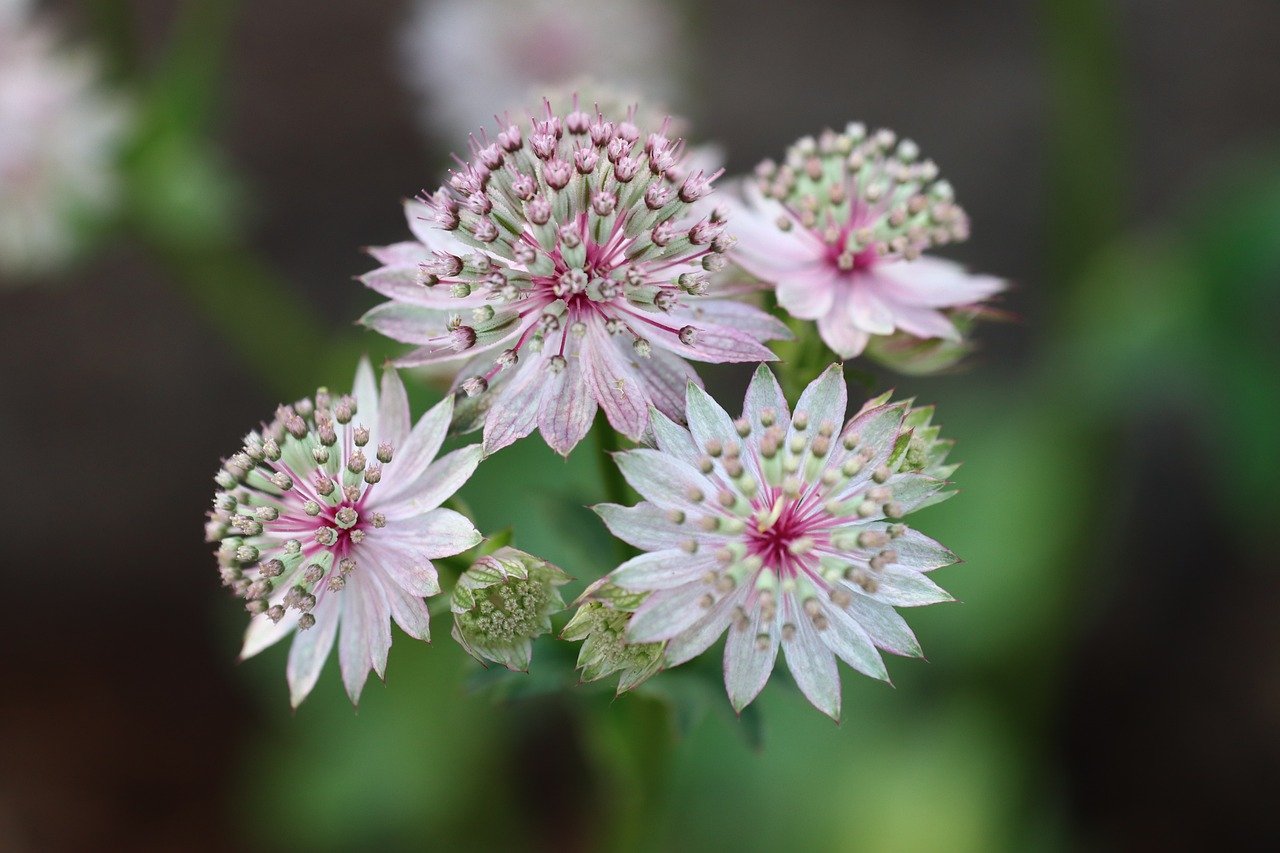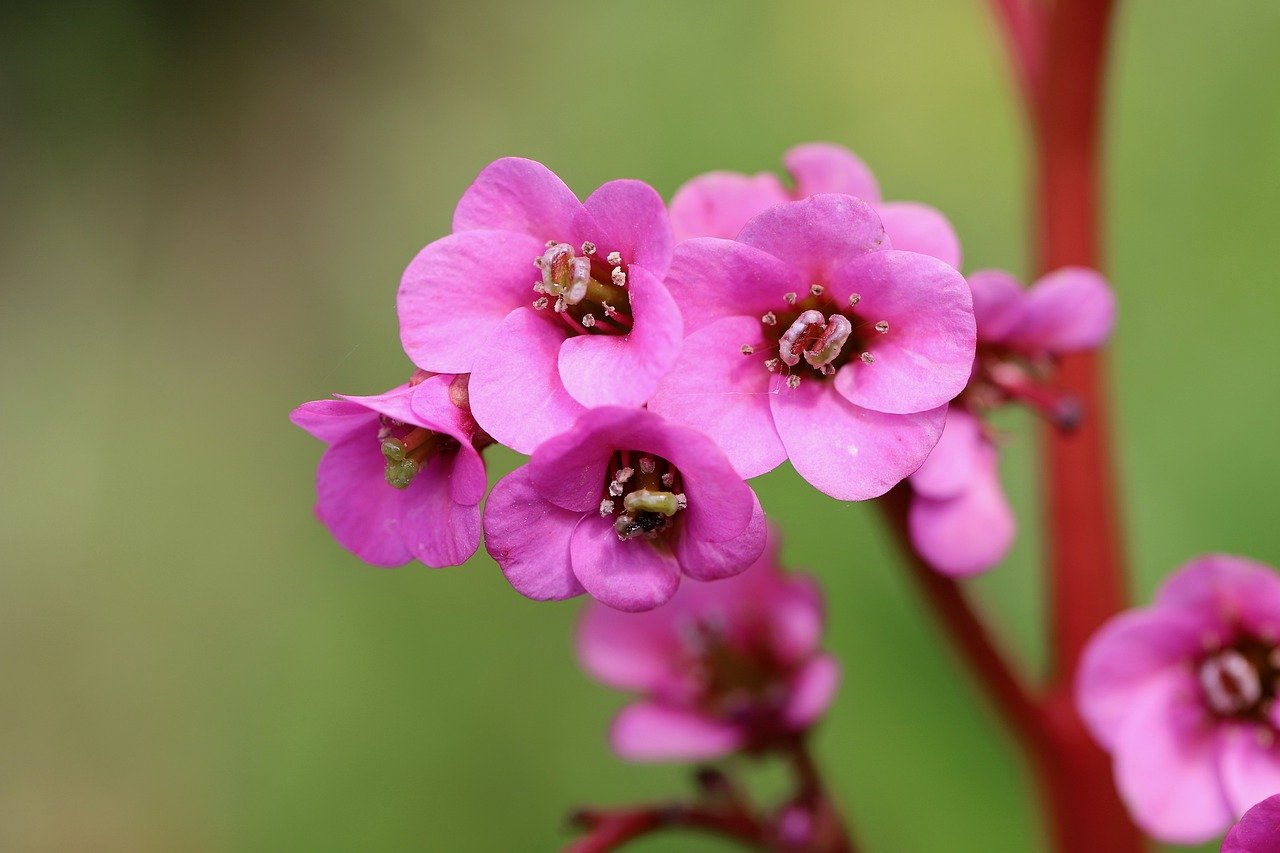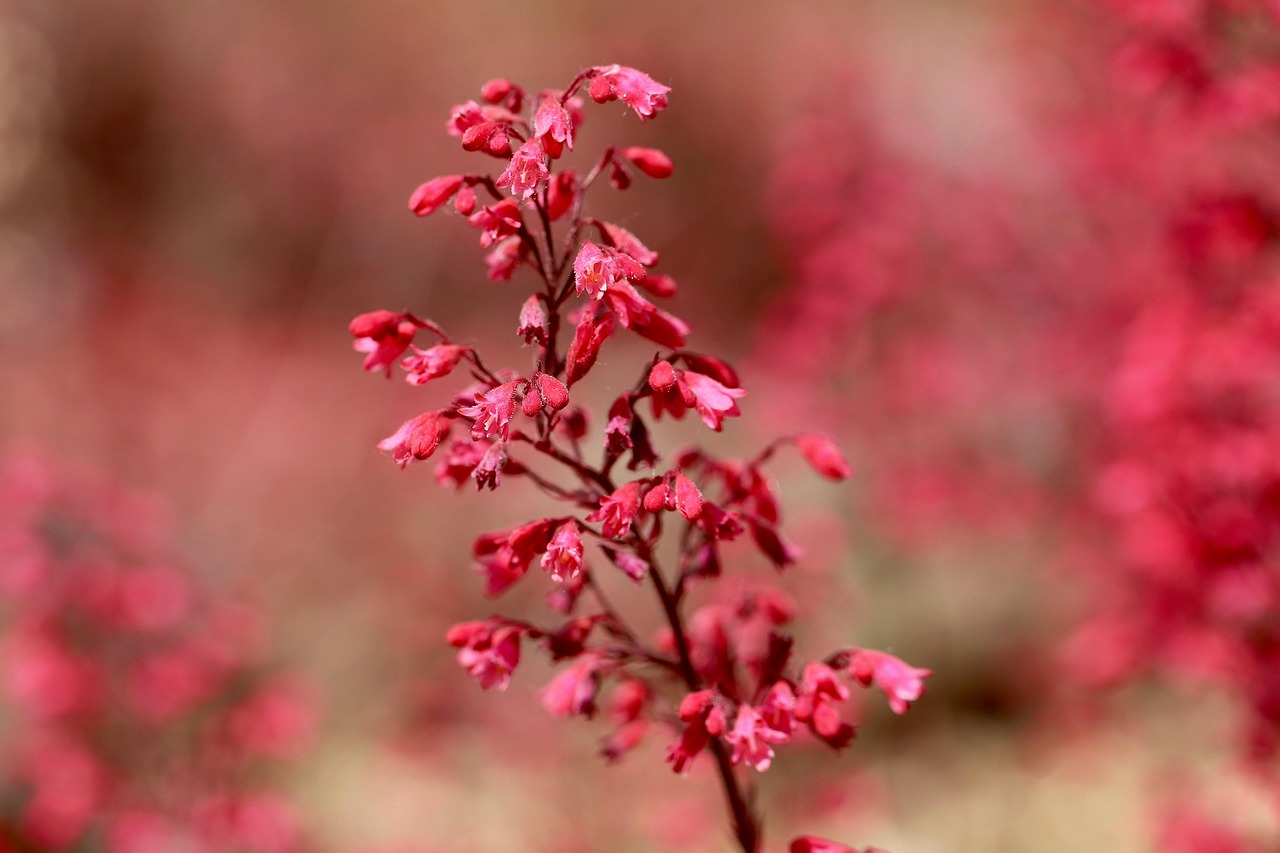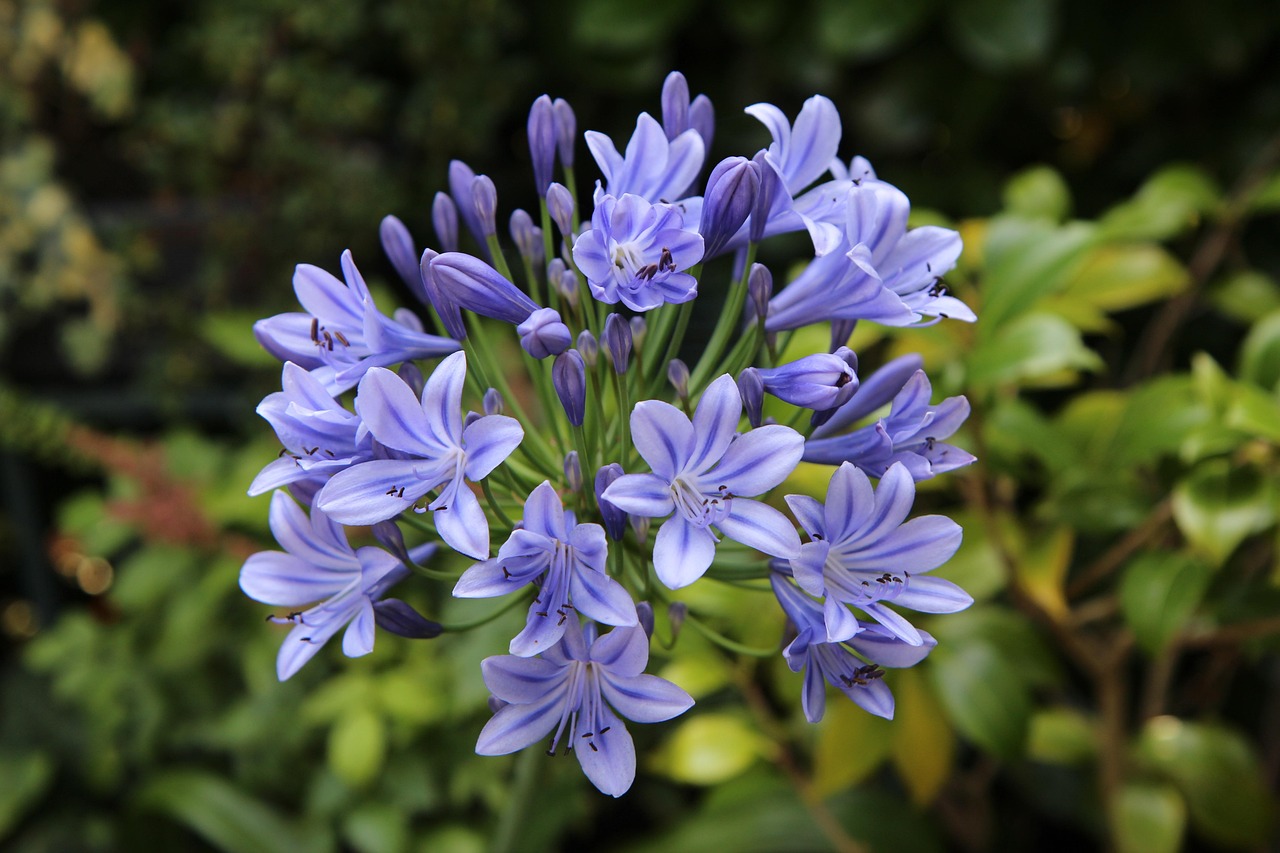Ranunculus | A Dress of Overlapping Petals
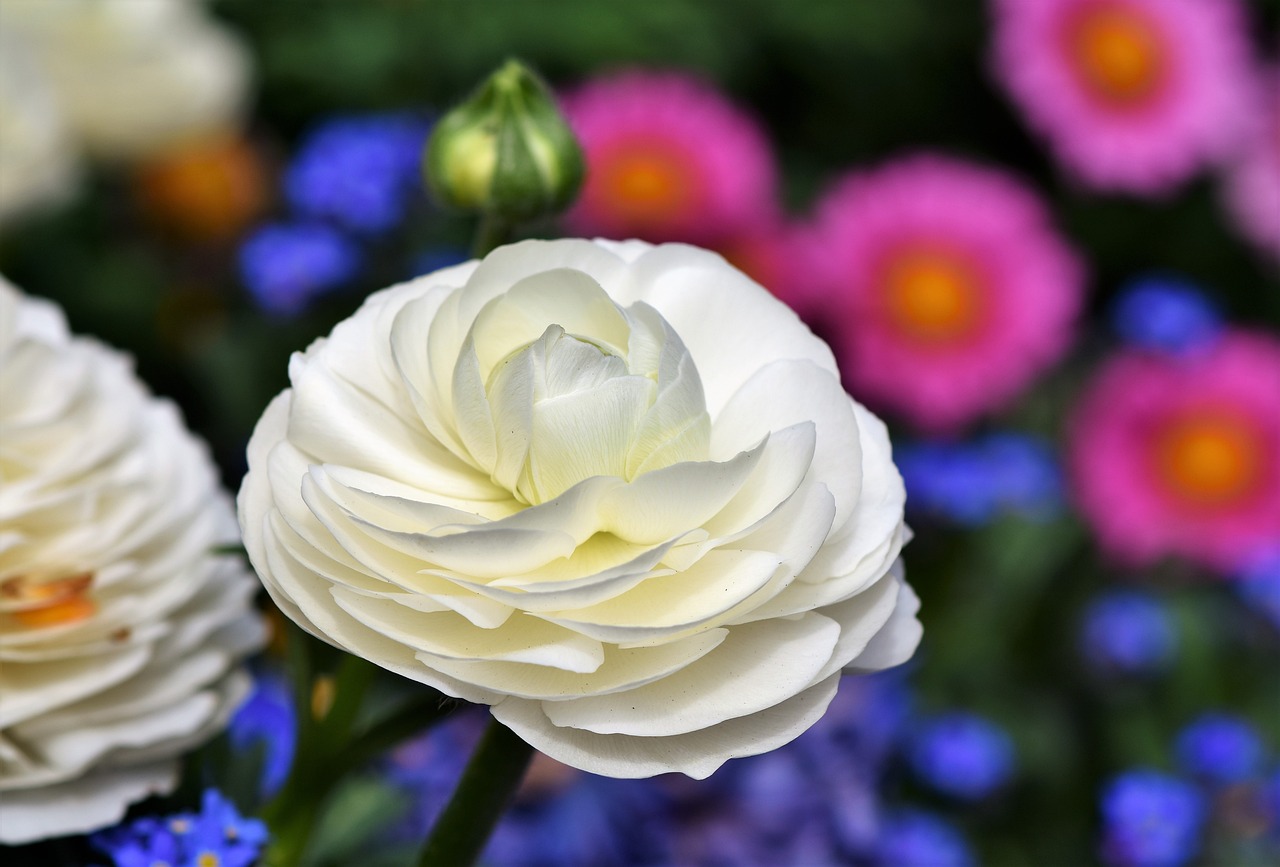
The ranunculus is a spring flower admired for its rose-like layered petals and its vivid colors. I often introduce this flower because it is widely used in gardening and flower arrangements, bringing brightness and elegance to both gardens and interiors.
In this article, I will present in detail the basic information, cultural background, and gardening tips for ranunculus.
Basic Information
- Scientific name: Ranunculus asiaticus
- Family: Ranunculaceae
- Origin: Mediterranean region and Western Asia
- Appearance:
Ranunculus is characterized by spherical flowers with numerous overlapping petals, reminiscent of roses. It comes in a wide range of colors such as red, pink, yellow, orange, white, and purple. The blooms are large and showy, while the slender stems are surprisingly resilient against strong winds. - Flowering season:
Mainly spring (March–May), though early planting may allow blooming in winter.
Cultural Significance Worldwide
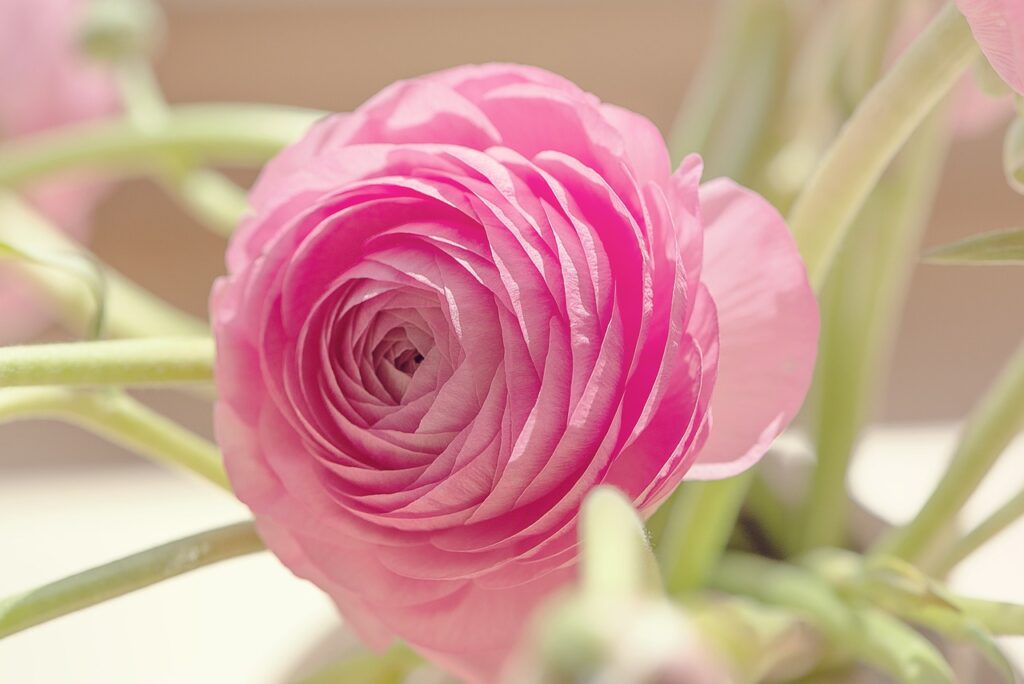
The vibrant and voluminous flowers of ranunculus captivate people across cultures. They are often chosen for floral arrangements and bridal bouquets.
The flower symbolizes charm and attractiveness, with meanings such as “you are radiant” or “you are very charming.”Like roses and carnations, it is a popular gift flower.
In the Mediterranean and Western Asia, it has long been cultivated as an ornamental flower. Numerous horticultural varieties have been developed in Europe, while in Japan it is also beloved as a spring garden flower.
Historical Background
Ranunculus has been cultivated as an ornamental flower since ancient Egypt and Greece. Its name derives from the Latin word meaning “little frog,” as it was often found growing near water or wetlands.
The flower gained remarkable popularity in 16th-century Europe, especially in Italy and France, where it was cherished in aristocratic gardens. Even today, it is widely used for weddings and special events as a glamorous decoration.
Gardening Advice
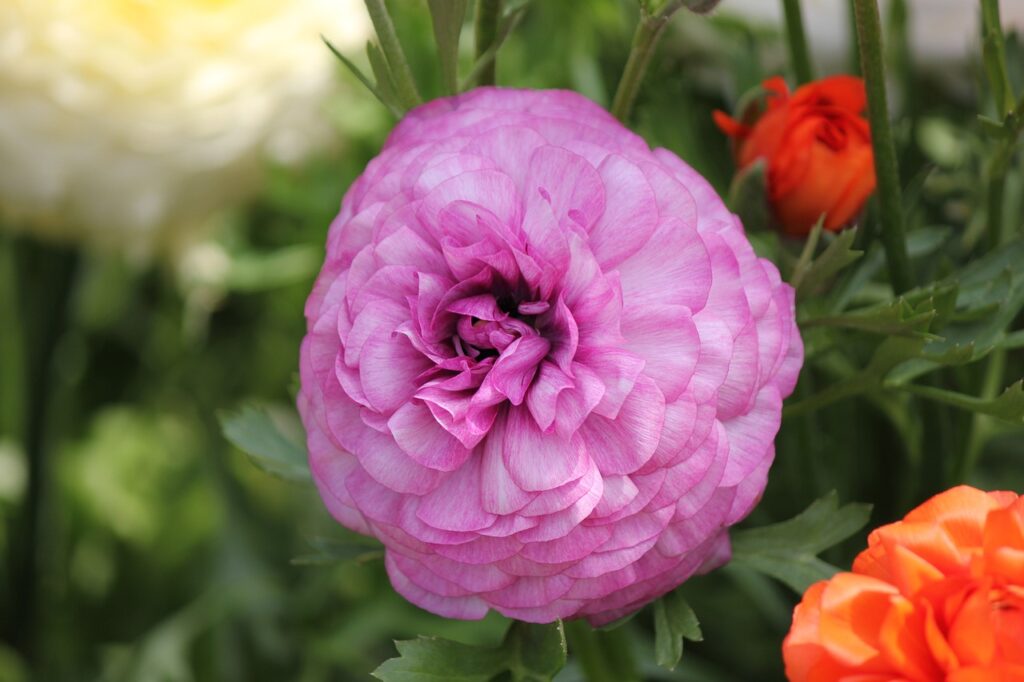
Cultivation Guide
Ranunculus thrives best in sunny locations, ideally with 6–8 hours of direct sunlight. Adequate sunlight allows the flowers to grow larger and more beautiful.
Water thoroughly when the soil is dry, but avoid excessive moisture. Since it is a bulbous plant, well-drained soil is essential.
Planting in autumn (October–December) is recommended. In colder regions, protect the plants from frost, while in warmer climates, planting in early winter will result in splendid spring blooms.
Environment and Growing Conditions
Well-drained sandy soil is ideal, as bulbs may rot in excessive moisture. Adding base fertilizer at planting time encourages strong spring blooms.
During the growing season, apply liquid fertilizer regularly. After flowering, remove wilted parts promptly to encourage the next bloom.
In summer, dig up the bulbs and store them in a cool place to enjoy the flowers again the following year.
Conclusion
Ranunculus, with its radiant colors and layered petals, is a flower that brightens spring gardens and interiors. It is easy to grow even for beginners, provided it receives sufficient sunlight and proper water management.
Often used in weddings and special events, this elegant flower is a wonderful choice to incorporate into your garden or interior décor.

